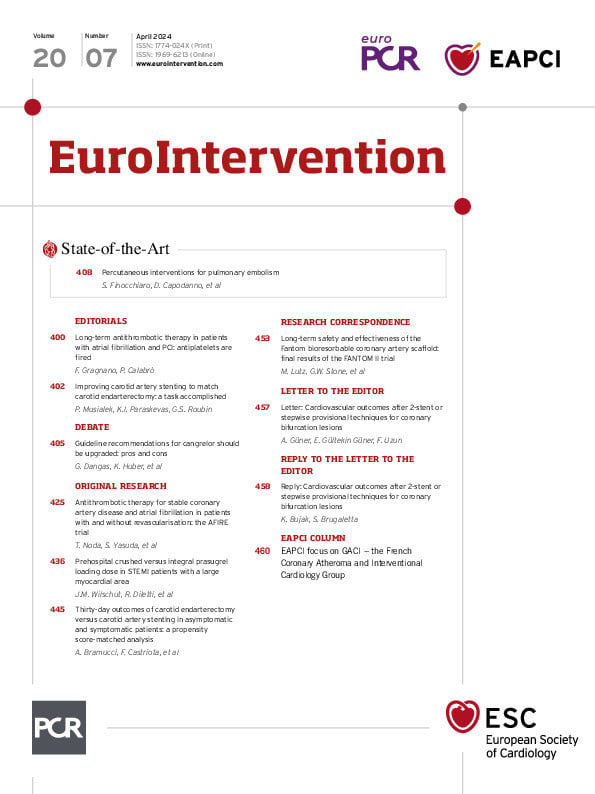What does EAPCI membership mean for a national society?
GACI (Groupe Athérome coronaire et Cardiologie Interventionelle) is a prestigious cardiology society in France with a very dynamic and active interventional cardiology group. It is important that GACI be integrated into a European network so that it can cooperate with other learned societies and participate in various European projects. GACI benefits from being a member country of EAPCI. Through EAPCI membership, networking with colleagues across the EAPCI member countries, we benefit from the skills and knowledge of colleagues and make an important contribution to European projects. It is also very important to be able to include our young cardiologists in the work of the EAPCI. Younger colleagues, fellows and trainees benefit from the many initiatives of the EAPCI, allowing them to develop networks early in their careers as well as apply for training and education grants.
What are the current challenges facing your national society?
We have three main issues:
Fractional flow reserve is no longer eligible for reimbursement, which is a challenge in daily practice, particularly given the current European guidelines regarding its use.
We would like to obtain reimbursement for intracoronary imaging, which is increasingly advocated in international recommendations.
We are seeking to obtain authorisation to perform TAVI in centres without cardiac surgery in order to reduce waiting times for our patients.
How has your national society worked with the EAPCI?
I really enjoyed meeting with the presidents of other European cardiology societies.
I participated in the work on the European Atlas in Interventional Cardiology and would like to have feedback on its future publication. I hope that, having participated, I will be a signatory of the publication.
What has been your national society’s biggest achievement?
We have worked hard on changing the authorisation regime for performing TAVI. We have not yet obtained permission to carry out these procedures outside of centres with cardiac surgery, but things have progressed well, and we believe that a pilot project will be carried out next year. The objective is to reduce the time on the waiting list for our patients, because colleagues have reported excess mortality, which is sometimes due to long delays.
How do you see the EAPCI and your national society working together in the future?
As I have written previously, I think that this cooperation should continue and increase. The various European interventional cardiology societies are still too compartmentalised. In the future, I think that this collaboration must include young cardiologists. If they become involved in the EAPCI when they are young, they are likely to continue working with the EAPCI in the future. This is why I think we must help them attend sessions in the different national congresses. By travelling and participating in congresses across Europe, they will feel more like European interventional cardiologists. We must also increase the scientific work involving learned societies such as the GACI. I remain available to the EAPCI for work on these areas of progress.
Society factsheet
Founded: 1977
President: Pr Eric Van Belle
Past President: Dr Hakim Benamer
Website: www.sfcardio.fr/gaci-groupe-atherome-coronaire-et-cardiologie-interventionnelle
Members: 1,100

